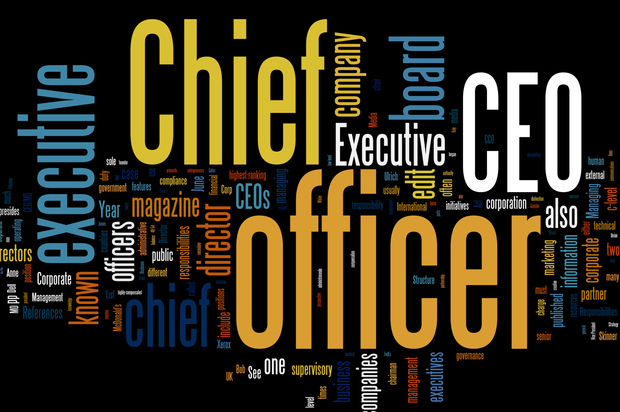Traditionally, the focus is on due diligence – for mergers and acquisitions on commercial and legal aspects. Very little attention is paid to IT and too late. This is despite the fact that IT is not only essential for business operations and for obtaining a strategic advantage, it also often strongly influences the ultimate success of a takeover.
In particular, the rapid rise of digital innovation is a driving factor in this. Without his unique app Uber would not have been a disrupter in the taxi market and without his well-visited and customer-friendly site, Booking.com would not have become a threat to the international hotel industry.
But IT also plays an increasingly important role in the business model of traditional companies such as banks and production companies. Examples are ERP systems that keep the business running, software as an essential part of new products, mobile apps that serve customers, and applications that protect a company against hackers.
The earlier the better
It is important that an IT assessment is carried out as early as possible. Do not get the IT experts on board until the deal is announced. The disentanglement of IT and the integration into the new organization can unintentionally be expensive. A professionally executed IT assessment at an early stage – preferably during the search for merger or acquisition candidates – leads to a shortlist of higher quality, a better insight into the risks of the merger or acquisition and a better planned transaction process. All this results in a better financial result and faster realization of the synergy effects after the transaction.
After all, the sooner you have an insight into those environments, the better you can plan the course of the integration, which has a direct influence on the achievement of the intended business benefits of the transaction. You also prevent that you later run into IT-related risks and unforeseen, high costs.
THE MANAGEMENT IS NOT OFTEN AWARE OF THE DAMAGE THAT IT CAN CAUSE
A poll from practice proves the importance of good IT due diligence. In a survey conducted by Ernst & Young among private equity managers – professionals who deal with deals and optimization of integrations on a daily basis – the respondents indicated that in almost half of the deals they were involved in, a more detailed IT due diligence value erosion could have been prevented. A fifth marked IT as ‘one of the most challenging areas after the transaction was done’.
A publication by McKinsey concludes that many mergers do not meet expectations because they get stuck on the integration of technology and operations. A well-planned IT integration strategy increases the chances of a successful acquisition.
When companies want to reach the maximum value, they can no longer ignore IT or only consider it as a back office function, EY concludes again.
IT seems in the closet
Seeming from the IT-area at mergers and acquisitions can result in a huge cost. It is crucial that IT risks are known in advance, just as board members want to know everything about the commercial and legal status of a target. Outdated, incomplete or non-connecting IT can be a real showstopper for the transaction. It is a shame if you find out too late. There are plenty of examples of deals that have failed due to poor IT integration.
Although much has been written about the costs of not or badly performing IT due diligence, management is often unaware of the damage IT can cause. After sealing the transaction, IT can throw a spanner in the works if it turns out that the IT systems of both parties do not match each other or can only be integrated at a high cost. In addition to boosting costs, this often comes at the expense of the expected commercial results and the return on the merger or acquisition.
This is also underlined by the aforementioned research by McKinsey & Company, which concluded: “Many mergers / acquisitions do not meet expectations because they get stuck on the integration of technology and operations. But a well-planned strategy for IT integration can make mergers successful. ‘
IT due diligence, how?
How can drivers then get a grip on the IT risks on the other side of the deal table? The answer lies in performing an IT due diligence, comparable to a commercial or legal due diligence.
This method has proven its value in practice. She starts with a preliminary investigation in which both the business context and the IT context of the deal are determined. Here we determine the objective of the intended acquisition, what the future operating model will look like and what degree of business integration is being sought. It is important to gain insight into the role that IT plays in this and the extent to which the current IT landscapes of both parties connect. This is also the time to look at possible bottlenecks and to determine which subjects should receive extra attention during formal due diligence. This does not only concern bottlenecks and risks, but also possible synergies.
A PRE-EXAMINATION MAY ALWAYS HAVE DIRECT EFFECT ON THE BUSINESS CASE
In a planned integration of companies or business units, both the IT situation of the seller and the buyer are mapped.
In some cases, such a preliminary investigation will have an immediate impact on the business case. For example if there is IT-related IP with a strategic value for the buyer.
Finally, it is very important at this stage to make the management involved aware of the role IT plays in the transaction in question.
The formal due diligence
During the formal due diligence a large number of IT aspects are taken off. This is done by means of an analysis of the provided documentation (the actual book research), interviews and workshops. This involves working closely with the related due diligence tracks, such as business, legal and financial, but also with the teams that look at product technology and supply chain processes.
The main research aspects are:
- The scope and professionalism of the internal IT organization by benchmarking with similar organizations.
- The quality of the services and solutions provided.
- The IT sourcing situation. What happens internally, what is outsourced and is there possibly vendor lock-in, which could make future integration more difficult?
- The IT landscape – with, among other things, attention to legacy systems that may stand in the way of future innovations, or that require high investments in the transformation to more modern systems and working methods.
- The relationship between business and IT including the associated IT governance.
- IT-related innovation, partnerships and intellectual property (IP).
- IT contracts – especially in the field of outsourcing, hardware and software licenses.
- Operational standards and reports in areas such as service management (ITIL) and for example dealing with privacy-sensitive information.
- Performed IT audits in the field of quality, performance and security, as well as internal and external customer satisfaction.
- The IT strategy and ongoing or planned IT projects, as well as the success of these projects.
- IT costs, assets and investments, again based on industry benchmarks.
- Security and disaster-recovery and necessary investments.
- For companies that develop software themselves or use a lot of embedded software in their products, it is also crucial to look at things like development processes and tools and the way software is maintained. Important aspects here are things like time-to-market, scalability and maintainability. The dependence on third parties also plays a role.
The results of the research are summarized in a SWOT analysis (strengths, weaknesses, opportunities, threats). In addition, the following aspects are reported in detail:
- IT-related synergies. This can range from licensing benefits to important strategic IT opportunities.
- The estimated value of IT assets and IP.
- Vulnerabilities, liabilities and risks – for example in the security field.
- Unforeseen costs or investments that affect the business case.
- The final part of the research concerns the possibilities to integrate the acquisition company or business unit. This results in an advice on the best unbundling and integration strategy and with which lead time can be calculated. Especially the latter determines the speed with which business benefits can be realized.
Make or break
It is important to take IT up early in the merger and acquisition process and to complete it in conjunction with the other disciplines involved in the process, such as commerce, finance and legal. Shortly through the curve: IT can make or break a merger or acquisition. With large costs if things are not going well and large yields if the intended synergies are actually achieved.


